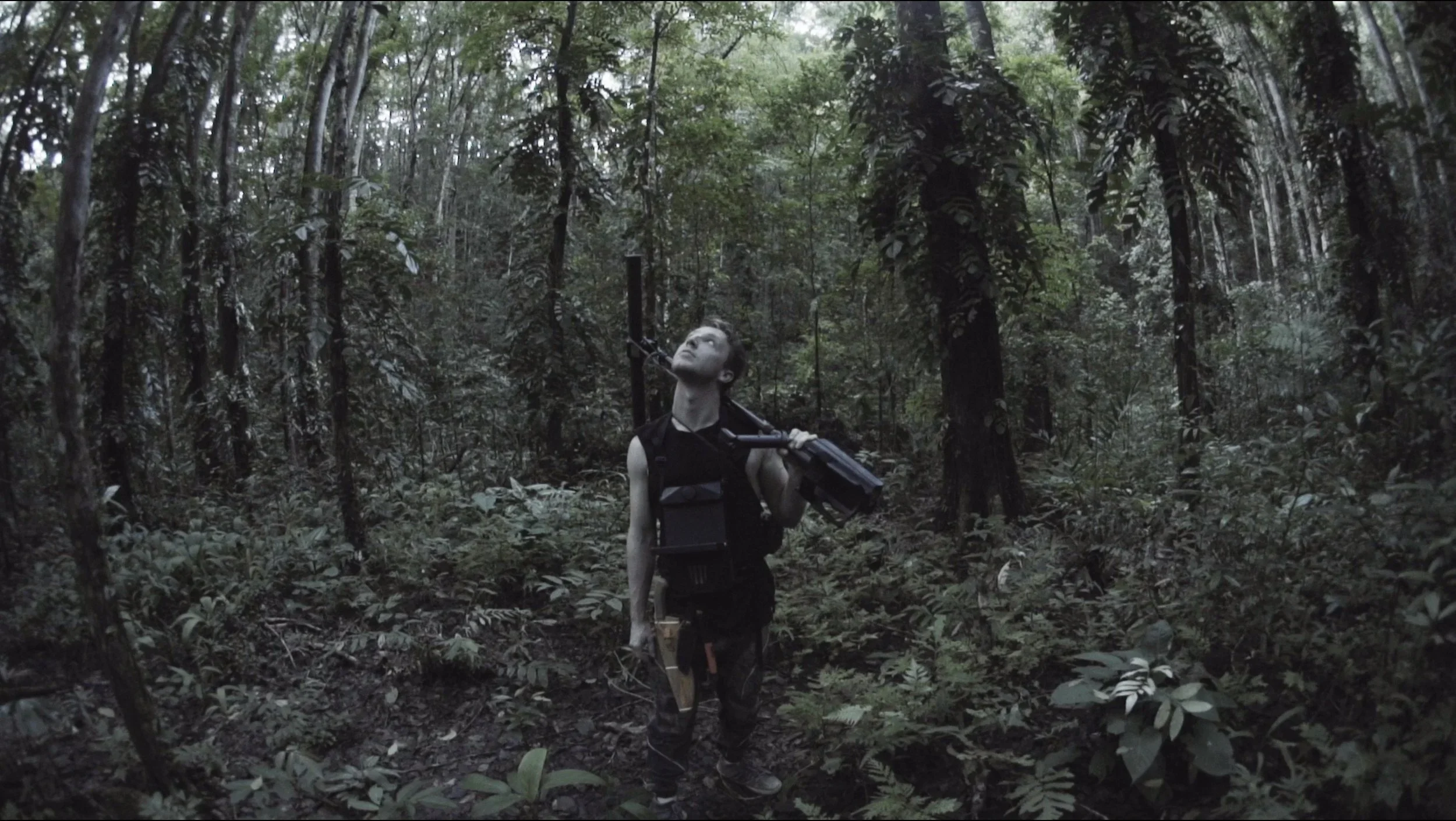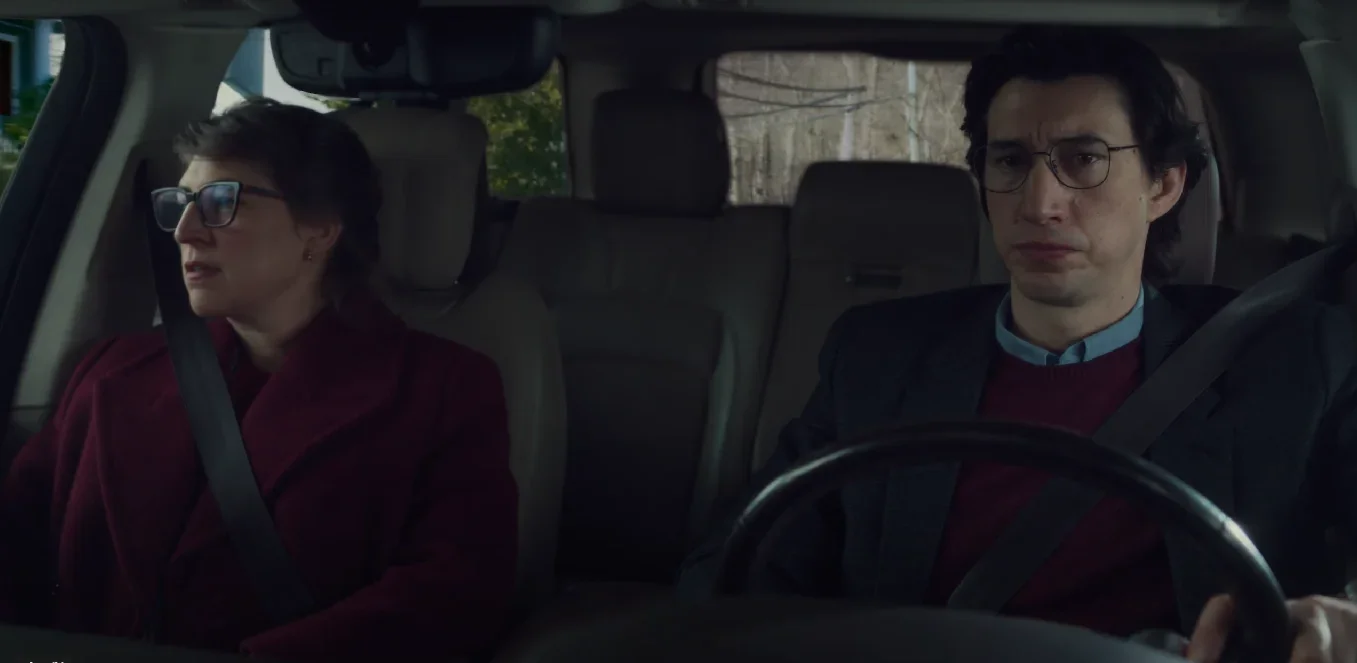‘Zack Snyder’s Justice League’ REVIEW: When fans will mediocrity into existence
‘Zack Snyder’s Justice League’ REVIEW: When fans will mediocrity into existence
Zack Snyder returns to finish what he started back in 2017.
In the time since the original Joss Whedon directed Justice League was released back in 2017, audiences got several tastes of what the DC Extended Universe could have looked like. They gave us a relatively okay Aquaman film, a surprisingly heartfelt rendition of Shazam, a small R-rated Harley Quinn dream project in Birds of Prey, and a sadly mediocre Wonder Woman sequel. Thereafter, Zack Snyder's own bona fide version of the Super Friends in 2021 gets released, and it makes you wonder—why didn't they have the patience to just do the cinematic universe order in this way instead of rushing to the finish line?
In this new age of streaming services, attention-grabbing projects are what gets people to flock to your Netflix rip-offs. And what else is more zeitgeisty than the infamously dubbed "Snyder Cut" which valiant fans (and haters) of Zack Snyder's original vision ferociously fought for. Fans did everything, mass campaigns, fundraisers, buying a private plane with a banner saying "Release The Snyder Cut" tied to it that flew over Comic Con, buying billboards advertising the Snyder Cut campaign in Times Square, and even more than you can possibly imagine. But, it took quite some time for Warner Bros. to get in with the message. For Warner Bros., to capitulate meant having to admit that their $300 million investment in the original Justice League (one of the most expensive films ever made) was a complete and total failure.
How Did We Get Here?
Zack Snyder had to step down from the original film due to the unfortunate passing of his own daughter, Autumn. This was what led to DC hiring previous Avengers director Joss Whedon to do reshoots and retooling of the script and production. With these reshoots came along Whedon’s signature style of quippy dialogue and obnoxiously comedic tone, all of which were the antithesis to Snyder’s own characterizations from the prior film.
To make matters worse, Whedon worked on a tight schedule and had to meet the November 2017 release deadline. Henry Cavill (Superman), already busy working on a much better film called Mission Impossible: Fallout, returned to do reshoots and had with him a million-dollar headache called a mustache which he was contractually obligated not to shave. VFX artists were forced to edit his facial hair out through technical wizardry and the final result is unflattering to say the least.
This picture sums up the failures of Whedon’s Justice League.
Other than that fiasco, Ray Fisher recently came out saying that Joss Whedon in the set of Justice League was borderline “gross, abusive, [and] unprofessional”. With so much stress in one production, at least on the bright side they believed that it would earn more than a billion dollars right? Because come on, it’s the JUSTICE LEAGUE. Unfortunately—and quite predictably—it didn’t earn a billion dollars, not even close. Only earning a measly $657.9 million, it became the lowest earning DCEU film at the time. What a disaster.
So why is there a Snyder Cut now? It can be boiled down to two things: 1) HBO Max happened, 2) The clamor for it was too big to ignore. Warner Bros. finally had an epiphany, they can earn a boatload of money from funding the Snyder Cut by releasing it in their novel streaming service plus they can actually give fans…what they want for once. Hitting two birds with one stone by throwing even more money at it.
It’s an unprecedented turning point in the filmmaking landscape. Fans can now literally will into existence the release of a previously shelved director’s cut. The aftermath of this project will float over the roundtable discussions of film studios years from now especially when it comes to the increasingly close relationship between fans and media. If anything is certain, it’s that the clear winner from all of this mess is Zack Snyder himself. He gets to finish his own unmitigated artistic vision for Justice League, and he gets to make a touching tribute for his late daughter. All the best for Mr. Snyder and his family.
It’s Dark and Depressing Again
So, is the Snyder Cut any good? It’s better than the original Justice League for sure, but mainly because it has the unfair advantage of being 4 goddamn hours long. If you can endure that, then you’ll be rewarded with the bare minimum of character arcs, a barrage of trademark slow-mo action scenes, and a more tolerable set-up. Basically, it’s just like any other semi-decent superhero film we’ve seen before.
The film starts where it left off in Batman v Superman: Dawn of Justice, with Superman’s death. In its introduction, it’s clear that this version of Justice League is far more interested in being more consistent with the narrative threads already established in the latter films. Whedon’s Super Friends tried to keep a healthy social distance from the critically panned Snyder films and tried to introduce a lighter tone, but it was just far too late for that. This cut wastes no time in revealing the Mother Box McGuffin after Superman’s death culminates in a scream that is heard all throughout the world. It’s an interesting visual depiction of the scale of Superman’s death that will undoubtedly reverberate throughout the rest of the film.
In here, the catalyst for the villainous Steppenwolf and his replaceable Parademon goons arriving is definitely much more compelling. The reordering of scenes and addition of Superman’s death serves as better logic for their fetch quest as opposed to them coming out of nowhere because of the lame excuse of “just because Superman is dead”. Steppenwolf also has a semblance of a personality now. He’s motivated by his desire to gain redemption in the eyes of the new big bad that DC has been so meticulously hinting at, Thanos! Just kidding, Darkseid!
Darkseid now plays a more prominent role in the film.
You can clearly see how absent Whedon’s creative (or comedic) liberties are in the first 15 minutes and in its place you have Snyder’s vision without any sort of compromise. The classic superhero musical themes from the Burton and Donner helmed Batman and Superman films are no longer heard here (also poor Danny Elfman). There’s also barely any jokes that can be found in this cold open. Everyone’s brooding, depressed, and despondent. Surely, this is what fans who clamored for this version wanted because this is exactly the portrayal that is consistent with Snyder’s version. If that is your cup of coffee, then hopefully you like it served dark.
Finally, Some Breathing Room
There’s something peculiar about how Snyder makes films. He’s an action-centric guy, and he knows that his strengths are more attuned to that department. But, that’s why it always feels like his characters are lacking. If we flashback to 12 years ago, he releases his own Watchmen Director's cut (plus an Ultimate cut) which gives more minutes to flesh out certain characters along with the addition of subplots that go along nicely with the themes of the film. Then, flashback to 5 years ago, Snyder releases an Ultimate Edition cut of Batman v Superman: Dawn of Justice which features 31 whole minutes of extra footage that, again, is dedicated to fleshing out characters and subplots that are pertinent to the film’s themes. Do you see a pattern here?
Notice how none of the supposed scenes that were cut were action scenes. Almost all of those scenes remained in the final product. When it comes to choosing between adding scenes of importance to character growth or scenes of importance to spectacle, Snyder almost always chooses the latter. Even in quieter scenes with more personal character interactions, Snyder wants to bombard you with as many balls to the wall sequences as possible.
Just to note a couple of examples: A simple conversation between a son and his mother has got to end abruptly with a car crash. The final member of a terrorist group has to be defeated by causing even more property damage. The Justice League has to cross a broken bridge (why is it even broken in the first place?) so they’ve got to use their powers or tools even if it’s such a measly task because it will look so damn cool!
The most egregious example of this type of excess is in the Cyborg origin scene. It portrays this important character development in the most hyperbolic method by showing bulls fighting each other to represent the economy, nuclear weapons being raised to the sky, and a very literal visual representation of the banking system. This is a great scene on its own, some might even say it goes way too far in some aspects. Regardless, this is exactly the type of character building that Snyder imagines he must do. It also helps that we finally get to see Ray Fisher’s remarkable performance as Victor Stone which was foolishly left on the cutting room floor.
Ray Fisher’s Cyborg, along with the Flash are now better characterized.
It’s almost as if it’s a chore for Snyder to commit more character-focused scenes in his films; he’d much rather leave them to extended cuts. He can’t commit to them unless something cool happens afterwards, or said cool thing is front and center. In that matter lies the challenge Snyder faces in this film because it’s the most character work that Snyder has had to juggle to this date. The result is something you would expect from a film that has the task of introducing three new heroes while still having to incorporate three other established ones; It’s good enough. The problem is why do you need to do it in 4 hours? Other films can do this with less time, just look at Captain America: Civil War which had the task of introducing Spider-Man, Black Panther while still incorporating all the other Avengers.
It’s quite telling that one of the standout scenes from all of the character driven moments is the scene with Barry Allen and his incarcerated father. It’s an intimate and resonating moment which hits the exact core of Flash’s heroism and his motivation to do good. In the original version, he wants to do good primarily because he says “I need friends,” and while that scene is still present in this version, you at least get a better idea of the other motivating factors that drive Barry to be a better person.
Speaking of which, Ezra Miller’s Flash is a lot more tolerable in this version than in the original. There is a lot of weight given to his powers and it isn’t used for a gag or written out of the main conflict because it’s too overpowered or something. He also isn’t a blubbering idiot anymore and meshes well with the overall team chemistry. The Cyborg and Flash scenes from the original version were fun to see, but in this one, their chemistry together is definitely more realized. There’s a good amount of back and forth that goes on between the two without feeling too forced.
Ben Affleck’s Batman and Gal Gadot’s Wonder Woman are also given breathing room to work off of each other. While there are more scenes where they talk about recruiting the other heroes, their pairing still doesn't really serve any narrative purpose other than exposition dump. There’s no clash in terms of character arcs or motivations, both of them are on the absolute same page and it’s why their scenes tend to become quite boring at times.
Spectacle, Spectacle, Spectacle
To reiterate Snyder’s strengths are in action scenes and spectacle. His action style fits more with his philosophy of wanting heroes to smile less and be more depressed because there’s nothing more edgy than blood being splattered all across the screen. Snyder’s trademark slow motion action scenes are back and he does not hold back. It works here because it gave each action sequence a pretense of suspense and heaviness to it, things that were sorely missing in the original.
Batman in this film has far more to do in terms of battles and it’s so incredible seeing Batfleck finally get to fend for himself and contribute to the team for once. He now does the bare minimum of being more strategic instead of blitzing into the battlefield by himself with no apparent plan at all. He also has a lot more to do and actually seems a lot more competent when going up against Parademons.
The first confrontation with Steppenwolf, the Amazonian battle, all of the Darkseid scenes, and of course the reworked final battle are all now a tad bit more amusing to watch. It doesn’t feel like a yawn-fest anymore because it’s easier to root for these heroes to win; what a difference building up characters make right? It is in these action scenes where Snyder’s excess actually works to its advantage as opposed to the film’s disadvantage.
Jason Momoa’s Aquaman actually doesn’t look like he’s another generic superpowered individual with the vague ability to control water. It’s also funny how the film gives us exposition about his arc that will lead into the Aquaman film when audiences have likely already seen it. Makes you wonder why an Aquaman film couldn’t have been prioritized first over a Justice League film.
Wonder Woman also has a lot of moments to shine and her arc is not bogged down anymore with fleeting references to her almost century old dead boyfriend. Also, quite funny that Diana never once mentions that she lost Steve twice instead of once in light of the events in Wonder Woman 1984.
There are actually moments when it feels exciting when the League shows up because the action beats are better executed. Time passes before Aquaman or Flash shows up again and they can reinvigorate an action scene. Wonder Woman takes center stage then it organically transitions to Batman taking over with Nightcrawler. Heroes take turns beating the crap out of Steppenwolf. It’s these little moments in action that serve as the makeup of a satisfying set piece.
Justice League’s money shot with all the heroes together.
Actual strategic teamwork was also an added punch to this version, and again, that’s the absolute bare minimum that should’ve been done from the beginning. Whedon just didn’t know what to do with Batman so all he did was crack jokes in his version. But, in here, Batman actually defers to his new found teammates to come up with a plan to save civilians. When the Flash doesn’t get to block all the debris falling onto hostages, Cyborg comes in to finish the job. Wonder Woman actually stands side by side with other heroes and doesn’t 1v1 Steppenwolf for no reason. Everything feels much more coordinated and satisfying to watch because it doesn’t border on spontaneous decision making.
Even with the high praise I give for the spectacle, sometimes too much is too much and there are points where it feeds into the film’s inconsistencies. Batman is suddenly a believer of blind faith because, well, guilt. They need Superman to come back so of course they have to nerf the reasoning skills of the one person who would probably be against that. Wonder Woman at no point comes back to Themyscira to check on the Amazonians despite clearly expressing grave concern for them. Atlanteans suddenly do not care about the most powerful object they have under their control because, well, the King is a terrible person. Cyborg is given unbelievably insane and ethically questionable powers that now all rest on the whims of a young teenager; quite a huge burden to give on the kid. The Flash does something—without giving too much—that, despite being one of the coolest scenes in the film, makes you question why he couldn’t do that earlier. There’s also this out of nowhere cameo that is so in your face, and is clearly there as a means of adding a tokenistic fan service moment.
All of these lingering inconsistencies and questionable moments are not given much attention in the interest of prioritizing spectacle. Surely this would be enough for fans since there’s no way these mishaps would be further explained in future films. The actors and the director themselves have already expressed that they’re done with this whole DC Cinematic project. This film isn’t even considered canon. If anything, these dangling narrative threads will be left at that, and Warner Bros. will continue churning out more solo stories like Shazam and their upcoming Robert Pattinson led Batman film instead.
Nevertheless, Zack Snyder’s Justice League is still an interesting case study of a work of art that was never meant to see the light of day. This was made for the fans, willed by the fans, and definitely will primarily be enjoyed by fans. This was a once in a lifetime gig that Zack Snyder took and he ran with it. This DC Universe is over and it’s probably going to end just like that despite the numerous end credits this film shoves at us to try and set-up future ones. Who knows, fans might just start clamoring for Justice League 2, and 3, and 4, and more. For the sake of everyone’s sanity though, hopefully they aren’t 4 hours long too.
‘Zack Snyder’s Justice League’ is now available on HBO Max and HBO Go.


















